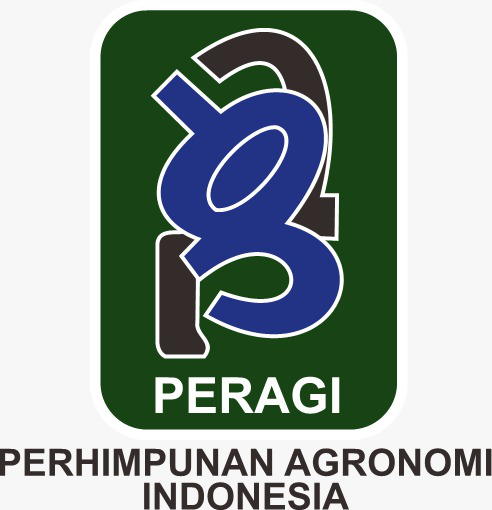Optimization of Cocoa Rootstock Seedling Growth (Theobroma cacao L.) MCC-02 Clone Using KoHeA+MF Organic Fertilizer Application
Abstract
Cocoa (Theobroma cacao) is a significant plantation crop with considerable economic importance. The beans derived from cocoa are abundant in antioxidants, which play a crucial role in cellular protection and the enhancement of endorphin levels. Given the increasing demand and favorable pricing, the future of cocoa cultivation appears promising. A critical factor influencing cocoa production is the quality of seedlings, particularly the rootstock. The growth of cocoa seedlings is affected by various elements, among which soil fertility stands out as a vital component of the planting medium. The necessary properties for optimal growth can be sourced from organic materials. One such organic amendment is KoHeA + MF organic fertilizer, which has demonstrated effective growth and yield improvements in pak choi. This study aims to formulate recommendations for an optimal planting medium composition that incorporates KoHeA + MF organic fertilizer for the nursery of cocoa rootstocks, ultimately producing high-quality seedlings. The research was conducted over a six-month period, from May to October 2024, at the experimental garden of the Payakumbuh State Agricultural Polytechnic, situated at an elevation of approximately 500 meters above sea level. The observed variables included leaf count, plant height, leaf length, and leaf width. The findings indicate that the most effective combination for cultivating the cocoa variety MCC-02 is a soil to KoHeA + MF ratio of 3:1.
Downloads
References
Balai Informasi Standar Instrumen Pertanian. (2023). Kakao Indonesia: Produksi, tantangan dan peluang. Badan Standardisasi Instrumen Pertanian. https://bisip.bsip.pertanian.go.id/berita/kakao-indonesia-produksi-tantangan-dan-peluang
Darmawan, J., & Baharsyah, J. (1983). Dasar-dasar ilmu fisiologi tanaman. IPB, Bogor.
Djuarnani, N., Kristian, & Setiawan, B. S. (2005). Cara cepat membuat kompos. Agro Media Pustaka, Depok.
Haikal, M. (2000). Respon pertumbuhan bibit kelapa sawit (Elaeis guineensis Jacq.) terhadap pemupukan N pada media tumbuh dengan inokulasi Trichoderma viride. Skripsi.
Hakim, M. (2007). Teknis agronomi dan manajemen kelapa sawit. Lembaga Pupuk Indonesia, Jakarta.
Hakim, W. L. N., & Zulfatri. (2019). Pengaruh berbagai bahan organik terhadap pertumbuhan bibit tanaman kakao (Theobroma cacao L.). JOM Faperta, 6(1), Januari–Juni.
Hanum, C. (2010). Teknik budidaya tanaman. Direktorat SMK, Kemendiknas, Jakarta.
Indah, P. N., Agustien, N., & Mulyadi. (2014). Budidaya tanaman kakao di Kecamatan Kademangan Kabupaten Blitar. LPPM UPN Veteran, Jawa Timur.
Jumin, H. B. (2001). Dasar-dasar agronomi. Rajawali, Jakarta.
Kebun Raya Kerajaan Kew. (2024). Pohon kakao. https://www.kew.org/plants/cacao-tree
Lakitan, B. (2000). Dasar-dasar fisiologi tumbuhan. PT Raja Grafindo Persada, Jakarta.
Matatula, A. J., Mahulette, A. S., & Tanasale, V. L. (2022). Budidaya tanaman perkebunan kakao.
Muryaningsih, S. T., Surater, & Goenaedi, D. H. (1995). Pemanfaatan kompos tandan kosong kelapa sawit sebagai media tanpa tanah dan pemupukan pada tanaman pot Spathiphyllum. Puslitbang Hortikultura, Jakarta.
Nyakpa, N., et al. (1988). Kesuburan tanah. Penerbit Universitas Lampung, Bandar Lampung.
Purbiati, T., Ernawanto, Q. D., & Soemarsono, S. R. (1993). Pengaruh ukuran wadah dan komposisi medium pada perbanyakan salak bali secara cangkok. Makalah Hasil Penelitian Buah-buahan 1992/1993. Sub Balai Penelitian Hortikultura, Malang.
Sarief, E. S. (1986). Kesuburan dan pemupukan tanah pertanian. Pustaka Buana, Bandung.
Soedidjanto. (1983). Cocok tanam I. CV Yasaguna, Jakarta.
Wulantika, T., Fitri, F., Sembiring, N., Sondang, Y., Hardaningsih, Wahono, S., & Anty, K. (2023). Pengaruh pemberian pupuk organik KoHeA+MF terhadap produksi benih padi Junjuang varietas unggul lokal. Jurnal Sinta, 4(2).
Copyright (c) 2025 Sentot Wahono, Febria Fitri, Yun Sondang, Trisia Wulantika, Wiwik Hardaningsih, Ngakumalem Sembiring, Khazy Anty

This work is licensed under a Creative Commons Attribution 4.0 International License.
Authors who publish with Jurnal Agronomi Tanaman Tropika (JUATIKA) agree to the following terms:
Authors retain copyright and grant the Jurnal Agronomi Tanaman Tropika (JUATIKA) right of first publication with the work simultaneously licensed under a Creative Commons Attribution License (CC BY 4.0) that allows others to share (copy and redistribute the material in any medium or format) and adapt (remix, transform, and build upon the material for any purpose, even commercially) with an acknowledgment of the work's authorship and initial publication in Jurnal Agronomi Tanaman Tropika (JUATIKA).
Authors are able to enter into separate, additional contractual arrangements for the non-exclusive distribution of the journal's published version of the work (e.g., post it to an institutional repository or publish it in a book), with an acknowledgment of its initial publication in Jurnal Agronomi Tanaman Tropika (JUATIKA). Authors are permitted and encouraged to post their work online (e.g., in institutional repositories or on their website) prior to and during the submission process, as it can lead to productive exchanges, as well as earlier and greater citation of published work.







 More Information
More Information



